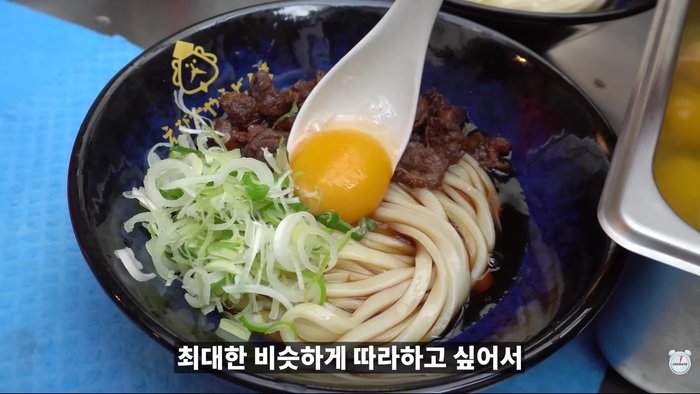Hidden amongst Seoul's bustling streets lies Ebisuya, a culinary gem serving a unique fusion dish: Galbi Udon. This isn't your average noodle soup; it's a harmonious blend of Korean galbi's rich, savory flavor and the comforting warmth of Japanese udon noodles. Imagine tender, marinated beef short ribs swimming in a deeply flavorful broth, perfectly complemented by chewy udon and a symphony of fresh vegetables. The rich, umami-laden broth is a testament to hours of simmering, resulting in a depth of flavor that will leave you craving more. This unforgettable experience is more than just a meal; it's a culinary journey.
Forget searching for the elusive Ebisuya secret recipe – we've unlocked it for you! This article will guide you step-by-step through the creation of your own authentic Ebisuya Galbi Udon, from perfectly marinating the galbi to achieving that signature rich broth. Prepare to impress yourself and your guests with this extraordinary fusion dish that effortlessly marries two distinct culinary traditions.
Tools Needed
- pot
- refrigerator
- frying pan
Ingredients
Step-by-Step Instructions
Step 1. Crafting the Umami-Rich Dashi
- Combine water, tsuyu, soy sauce, mirin, cheongju, hondashi, and sugar in a pot. Boil vigorously for 10 minutes .
- Turn off the heat, add kasaobushi, refrigerate, and then strain .
- Adjust the dashi's saltiness and sweetness with water and sugar .


Step 2. Preparing the Savory Galbi
- Cut beef into small pieces. Stir-fry with soy sauce, sugar, and miwon over high heat .
- Add udon dashi to the galbi, stir-frying until cooked .


Step 3. Cooking the Udon Noodles
- Boil frozen udon noodles and drain .

Step 4. Assembling the Ebisuya Galbi Udon
- Pour half of the udon dashi into a bowl with the udon noodles .
- Top with galbi, shredded green onions, egg yolk, seaweed flakes, and sesame seeds .


Read more: Glass Noodle Stir-fry with Shrimp & Veggies: Easy Korean Recipe
Tips
- The recipe uses frozen udon noodles .
Nutrition
- N/A
FAQs
1. Where can I find authentic Ebisuya Galbi Udon?
Ebisuya is a specific restaurant in Seoul. This recipe aims to recreate their dish at home, as the exact recipe is a secret.
2. Can I substitute the beef short ribs?
While beef short ribs give the best flavor, you can substitute with other beef cuts like chuck roast or even thinly sliced ribeye, adjusting cooking time accordingly.
3. What kind of udon noodles should I use?
Use fresh or dried thick udon noodles. Fresh noodles will have a slightly better texture, but dried are perfectly acceptable.
With this recipe, you can now savor the delicious fusion of Korean and Japanese flavors in the comfort of your own home. The rich broth, tender galbi, and chewy udon noodles will transport you to the heart of Seoul, all without leaving your kitchen. Enjoy the culinary adventure, and don't hesitate to experiment with your own additions to personalize this extraordinary dish!
